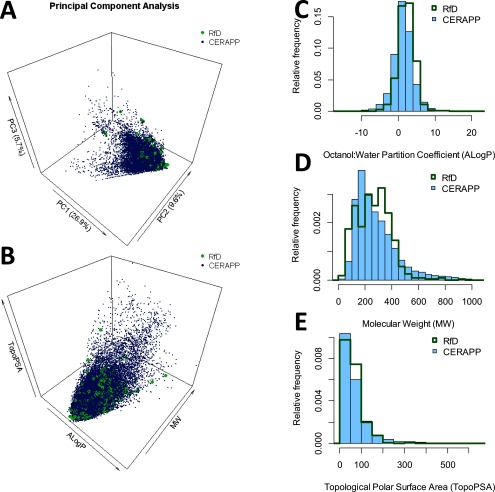Figure 6.
Chemical space coverage of reference doses (RfDs). The chemical properties of chemicals from the database of RfDs was compared to 32,464 structures in the Collaborative Estrogen Receptor Activity Prediction Project (CERAPP) “prediction” dataset from Mansouri et al. (2016), based on chemical descriptors generated from chemistry development kit (CDK) (Guha 2007). (A) 3-D plot of coverage based on first three principal components; (B)–(E) Coverage comparisons based on easily interpretable descriptors Octanol:Water Partition Coefficient (ALogP), Molecular Weight (MW) in Daltons, and Topological Polar Surface Area (TopoPSA) in angstroms squared. (B) is a 3D plot, and (C)–(E) are histograms comparing the distributions of compounds for each descriptor.

